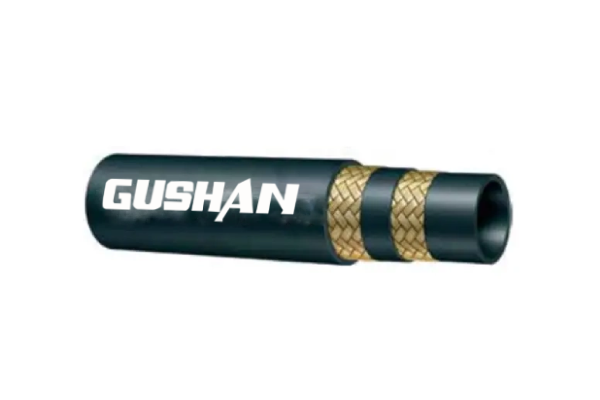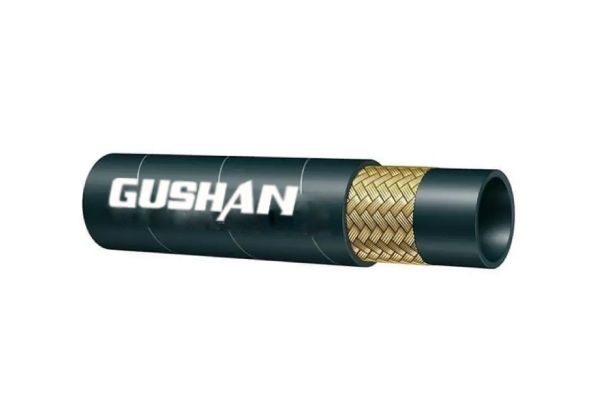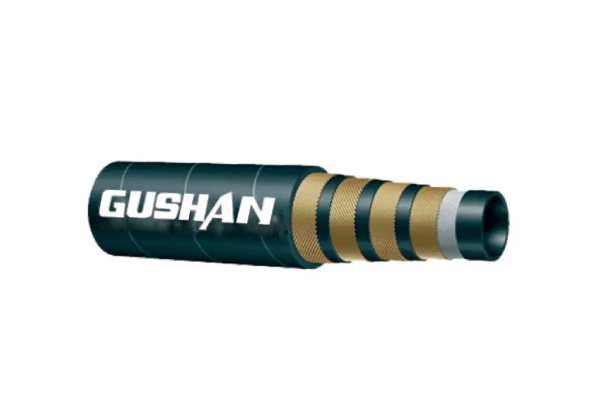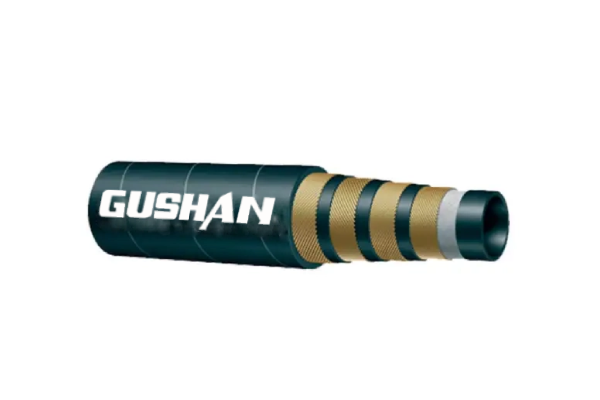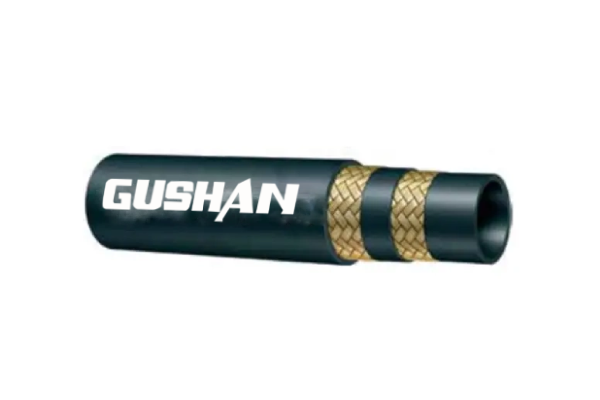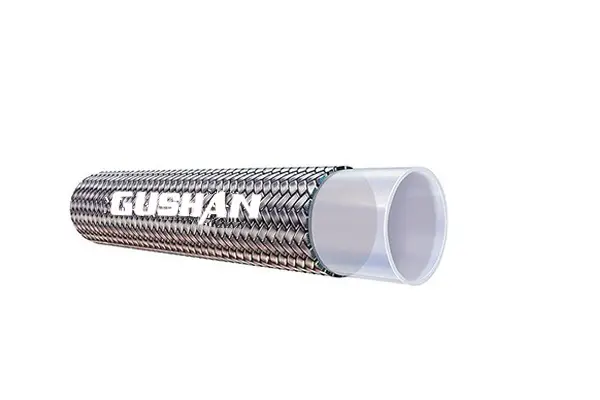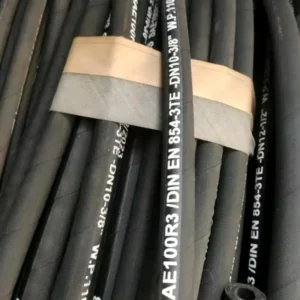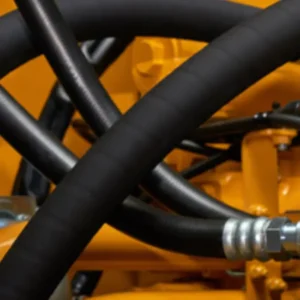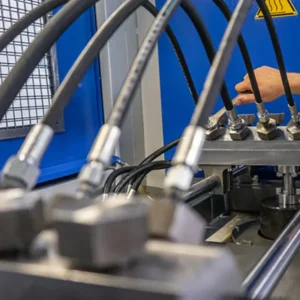Transmission lines are the critical lifelines of our modern power grid. Ensuring their reliable and efficient operation is paramount. Hydraulic hoses play a vital role in this process, powering essential equipment used in construction, maintenance, and repair.
This blog post will delve into the specific requirements and considerations for selecting and using hydraulic hoses in the demanding environment of transmission line projects.
What Is a Hydraulic Hose
A hydraulic hose is a flexible tube designed to convey hydraulic fluid under pressure.
Here’s a breakdown:
- Purpose: Hydraulic hoses are essential components of hydraulic systems, which use pressurized fluid to transmit power and motion.
- Function: They connect various components within a hydraulic system, such as pumps, valves, cylinders, and motors.
- Construction: Typically, a hydraulic hose consists of multiple layers:
- Inner Tube: This layer is in direct contact with the hydraulic fluid. It’s usually made of rubber or synthetic materials resistant to the fluid and abrasion.
- Reinforcement Layers: These layers provide strength and flexibility to the hose, enabling it to withstand high pressures and bending. They may consist of steel wire, synthetic fibers, or a combination of materials.
- Outer Cover: This layer protects the inner layers from abrasion, chemicals, and environmental factors. It’s typically made of rubber or synthetic materials.
Hydraulic Hose Characteristics:
- Pressure Rating: The maximum pressure a hose can withstand without failing.
- Temperature Range: The operating temperature limits within which the hose can safely function.
- Fluid Compatibility: The ability of the hose to withstand the specific hydraulic fluid used in the system.
- Abrasion Resistance: The hose’s ability to resist wear and tear from contact with other surfaces.
- Flexibility: The ease with which the hose can be bent and routed within the system.
Hydraulic Hose Applications
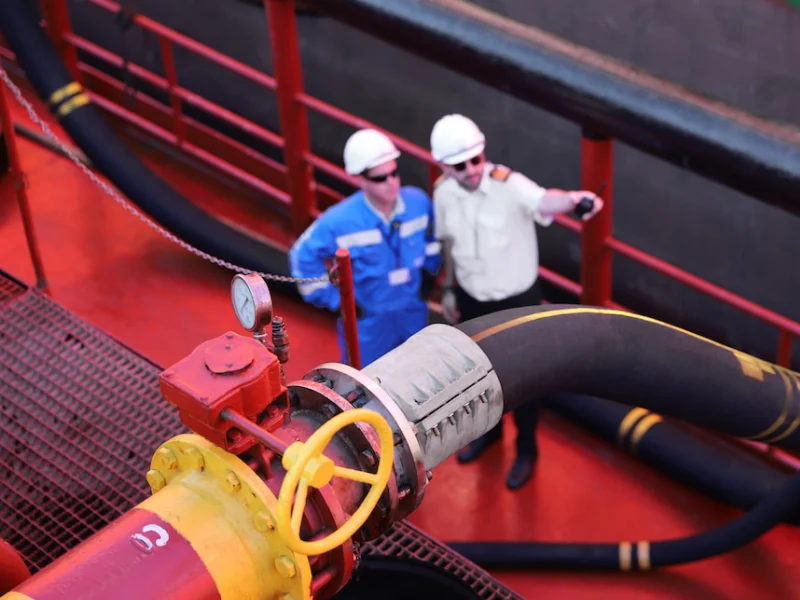
Hydraulic hoses find applications in a wide range of industries and equipment. Here are some key areas:
Construction Equipment:
- Excavators: Operate digging arms, buckets, and other attachments.
- Bulldozers: Control the blade and other components.
- Cranes: Lift and move heavy loads.
- Dump Trucks: Operate the tipping mechanism.
- Backhoes: Power the digging arm and bucket.
Industrial Machinery:
- Presses: Apply force for forming and shaping materials.
- Injection Molding Machines: Control the movement of molds.
- Conveyors: Transport materials along production lines.
- Robotics: Power the movement of robotic arms and grippers.
- Manufacturing Equipment: Used in various industrial processes.
Transportation:
- Trucks: Power brakes, steering systems, and suspension systems.
- Buses: Similar applications as trucks.
- Aircraft: Control flight surfaces, landing gear, and other systems.
- Marine: Operate steering systems, winches, and other equipment on ships and boats.
Agriculture:
- Tractors: Operate implements such as plows, harvesters, and sprayers.
- Farm Machinery: Control various functions in agricultural equipment.
Other Applications:
- Oil and Gas: Used in drilling rigs, pipelines, and other oilfield equipment.
- Mining: Power heavy machinery used in mining operations.
- Aerospace: Used in aircraft and spacecraft for various functions.
- Military: Employed in military vehicles and equipment.
This is not an exhaustive list, but it highlights the diverse applications of hydraulic hoses across various industries and equipment.
Hydraulic Hose for Transmission Line

While “transmission line” typically refers to electrical power transmission, hydraulic hoses can be used in various applications related to fluid transfer, including some that might indirectly support transmission line infrastructure.
Hydraulic hoses are used in some transmission line construction and maintenance operations. True
Hydraulic hoses play a crucial role in various aspects of transmission line construction and maintenance, including:
- Stringing operations: Hydraulic systems are used to pull and tension the conductors that carry electricity.
- Pole setting: Hydraulic jacks and cylinders are employed to erect and position transmission towers and poles.
- Equipment operation: Many specialized tools and equipment used in transmission line work, such as digger derricks and aerial lifts, rely on hydraulic systems.
- Maintenance tasks: Hydraulic tools are used for tasks like cutting and splicing conductors, as well as for operating tensioning and pulling gear during maintenance activities.
Standard hydraulic hoses are suitable for use on transmission lines. False
Transmission lines operate in harsh environments with extreme temperature variations, high winds, and potential exposure to corrosive elements. Standard hydraulic hoses are not designed to withstand these conditions and may fail prematurely, leading to:
- Loss of hydraulic fluid: Leaks can compromise system performance and potentially cause environmental damage.
- Damage to equipment: Fluid leaks can damage sensitive equipment and components.
- Safety hazards: Failing hoses can pose a safety risk to personnel working on or near the transmission line.
- System downtime: Hose failures can lead to costly system shutdowns and repairs.
- Enhanced temperature resistance: To withstand extreme temperature fluctuations.
- Abrasion resistance: To protect against wear and tear from wind, ice, and other environmental factors.
- UV resistance: To prevent degradation from sunlight exposure.
- Oil and chemical resistance: To maintain integrity in harsh environments.
- Flame resistance: To minimize the risk of fire in case of a leak.
Here are some example about the hydraulic hoses used transmission hydraulic lines.
Construction and Maintenance:
Hydraulic hoses are essential in heavy machinery used for constructing and maintaining transmission towers, substations, and other infrastructure.
They power equipment like excavators, cranes, and drilling rigs.
Cooling Systems:
In some cases, hydraulic hoses might be used in cooling systems for transformers or other electrical components within a transmission substation.
Specialized Applications:
In specialized applications, hydraulic systems might be used for tasks like stringing transmission lines or performing maintenance on high-voltage equipment.
Important Considerations:
- Fluid Compatibility: The hydraulic hose must be compatible with the specific fluid being used (e.g., hydraulic oil, coolant).
- Pressure and Temperature Ratings: The hose must be able to withstand the operating pressures and temperatures of the system.
- Abrasion and Chemical Resistance: Hoses used in outdoor environments or exposed to harsh chemicals need to be resistant to damage.
- Safety Standards: Ensure the hoses meet relevant industry safety standards.
Can a Hydraulic Hose Be Used for Transmission Fluid
Yes, some hydraulic hoses can be used for transmission fluid.
- Compatibility is Key: The crucial factor is whether the specific hydraulic hose is rated and designed for use with transmission fluid.
- Fluid Compatibility: Transmission fluids have unique properties and can degrade certain types of rubber. The hose must be compatible with the specific type of transmission fluid being used.
- Temperature and Pressure: Transmission fluid operates at specific temperature and pressure ranges.2 The hydraulic hose must be able to withstand these conditions without failing.
- Industry Standards: Ensure the hose meets relevant industry safety standards for use with transmission fluid.
Important Note: Always consult the manufacturer‘s specifications and recommendations to determine the suitability of a particular hydraulic hose for your specific transmission fluid application. Using an incompatible hose can lead to leaks, hose failure, and potential damage to the transmission system.
Can I Use a Power Steering Hose for a Transmission Line
No, you should not use a power steering hose for a transmission line.
Here’s why:
- Compatibility: Power steering hoses are designed for power steering fluid, which has different properties than transmission fluid.1 Transmission fluid can degrade the materials used in power steering hoses, leading to leaks, hose failure, and potential damage to the transmission system.
- Pressure and Temperature Ratings: Power steering systems and transmissions operate at different pressure and temperature ranges. A power steering hose may not be able to withstand the higher pressures or temperatures encountered in a transmission system.
- Safety: Using an incorrect hose can lead to serious safety hazards, such as fluid leaks, fires, or even system failure.
Always use the correct type of hydraulic hose specifically designed for transmission fluid applications.
Can You Use Fuel Injection Hose for Transmission Line
No, it would help if you did not use a fuel injection hose for a transmission line.
Here’s why:
- Compatibility: Fuel injection hoses are designed for gasoline or diesel fuel, which have different chemical properties than transmission fluid. Transmission fluid can degrade the materials used in fuel injection hoses, leading to leaks, hose failure, and potential damage to the transmission system.
- Pressure and Temperature Ratings: Fuel injection systems and transmissions operate at different pressure and temperature ranges. A fuel injection hose may not be able to withstand the higher pressures or temperatures encountered in a transmission system.
- Safety: Using an incorrect hose can lead to serious safety hazards, such as fluid leaks, fires, or even system failure.
Always use the correct type of hydraulic hose specifically designed for transmission fluid applications.
Can Hydraulic Hose Be Used for Fuel Hose
No, it would be best if you did not use a hydraulic hose for a fuel line.
Here’s why you’d better not use the hydraulic hoses for the fuel hose:
- Compatibility: Hydraulic hoses are designed for hydraulic fluids, which have different chemical properties than gasoline or diesel fuel. Fuel can degrade the materials used in hydraulic hoses, leading to leaks, hose failure, and potential damage to the fuel system.
- Pressure and Temperature Ratings: Hydraulic systems and fuel systems operate at different pressure and temperature ranges. A hydraulic hose may not be able to withstand the specific pressures and temperatures encountered in a fuel system.
- Safety: Using an incorrect hose can lead to serious safety hazards, such as fuel leaks, fires, or even engine damage.
Always use the correct type of fuel hose specifically designed for fuel applications.
Conclusion
In today’s demanding industrial landscape, reliable hydraulic hose performance is paramount for efficient and safe transmission line operations. Choosing the right hydraulic hose is crucial to ensure optimal fluid transfer, minimize downtime, and maximize the lifespan of your equipment.
By carefully considering factors such as pressure ratings, temperature extremes, chemical compatibility, and abrasion resistance, you can select the ideal hydraulic hose for your specific transmission line application.
Ready to upgrade your transmission lines with premium hydraulic hoses? Contact us today to discuss your requirements and discover the best solutions for your specific needs. Our experts are ready to assist you in selecting the right hoses for optimal performance and long-term reliability.

